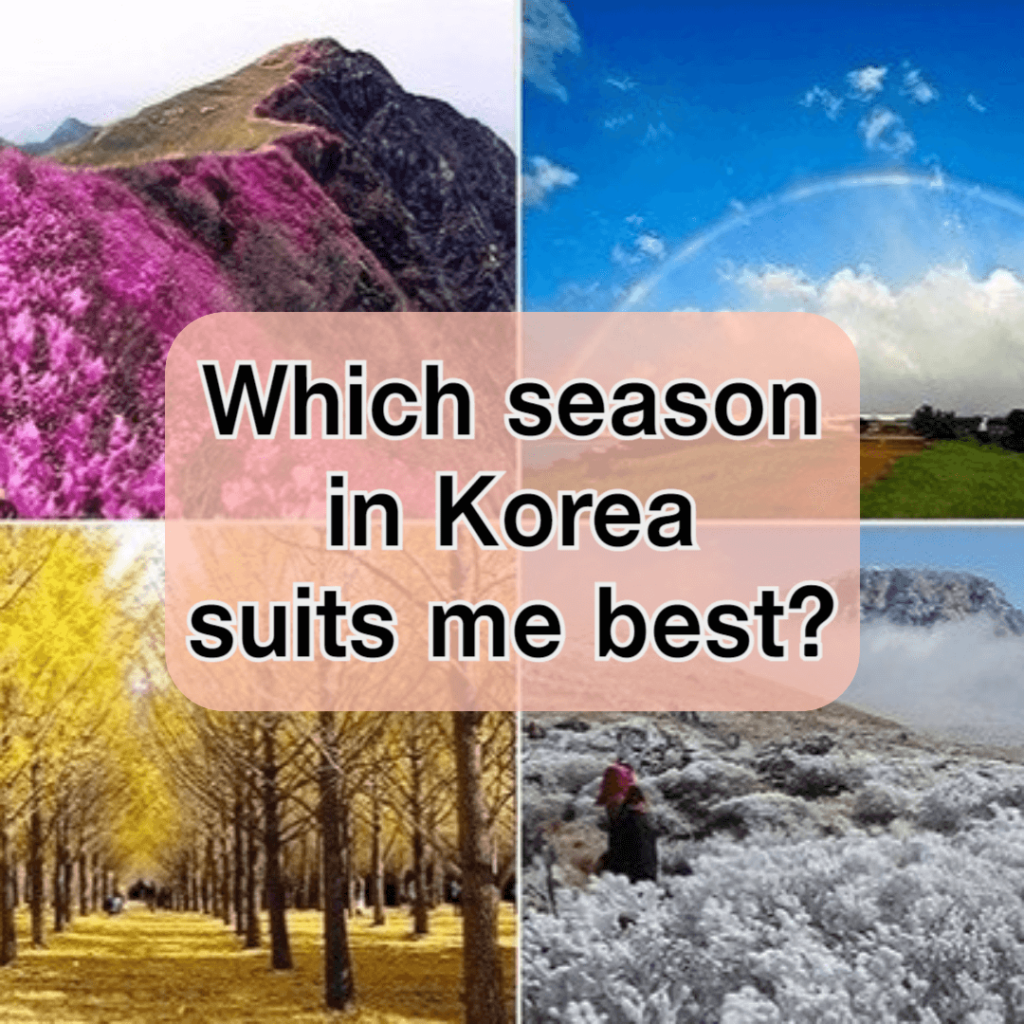What’s your favorite season? Where you’re living now, is it hot all year round?
Or maybe cold? When it comes to traveling, I think the weather is the most important thing!
If you ever plan on visiting Korea, just follow my lead—I’ll help you figure out which season suits you best.
Let’s find your perfect time to explore together!

Spring, flowers that welcome you wherever you go
Spring, which arrives between March and May, marks the end of the chilly winter as everything comes back to life.
Across the country, vibrant flowers bloom in all colors, and locals head to parks with picnic blankets to enjoy the romantic tradition of flower viewing.
Since spring days can have big temperature swings between day and night, it’s best to layer up with a light jacket, long sleeves, and pants—perfect for easy on-and-off as needed!
The average temperature ranges from 10 to 20°C (45 to 70°F).
If you visit, Korea’s breathtaking spring will welcome you with open arms.
Don’t miss Jeju Island’s stunning canola fields ( Yuchae flower ), the famous cherry blossom festival in Jinhae, or the Yeouido Cherry Blossom Festival along the Han River in Seoul.
Summer, hot but equally refreshing with water activities
From June to August, it’s summer in Korea.
During the rainy season, which runs from late June to late July, expect frequent rain and high humidity.
But don’t let the heat and humidity stop you—there’s plenty of summer fun to be had in Korea!
Surrounded by ocean on three sides, Korea offers a variety of coastal experiences depending on your taste.
If you’re into clear waters and surfing, head to Sokcho or Samcheok on the east coast. Want to enjoy the sea with a vibrant city vibe? Try Busan or Yeosu on the south coast. Looking for something unique? Don’t miss the Boryeong Mud Festival on the west coast!
Korean summers range from around 20 to 35°C (70 to 90°F).
It might not be familiar to you, but while you’re here, why not cool down with a bowl of naengmyeon, Korea’s famous cold noodles?
Autumn, the season of festivals and colorful fallen leaves
Korea’s autumn, from September to November, brings a charm all its own, different from the freshness of spring.
Autumn in Korea is a season of harvest, and you’ll find festivals happening everywhere across the country.
True to the festive spirit, the weather stays pleasant, with temperatures around 20°C to 25°C (45°F to 80°F).
Korea’s autumn leaves paint the mountains in vibrant shades of red, orange, and yellow. Did you know that 70% of Korea is covered by mountains?
Now imagine yourself surrounded by these breathtaking landscapes—like stepping into a watercolor painting!
If you’re a mountain lover, I highly recommend visiting Seoraksan in Gangwon-do, Jirisan in Jeolla-do, or Namsan in Seoul during the fall.
These mountains will greet you with their stunning autumn colors!
Winter, biting cold and the warmth of gentle snowfall
From December to February, Korea’s winter brings some seriously cold weather—but with that comes the promise of beautiful, fluffy snowfall!
With temperatures ranging from -10°C to 5°C (10°F to 40°F), and chilly winds to match, it’s definitely a season for bundling up.
But guess what? Despite the cold, people love heading outdoors!
Whether it’s skiing and snowboarding at resorts like Yongpyong, Phoenix Park, or Vivaldi Park, or hiking up a mountain to catch a breathtaking sunrise, winter is packed with adventure.
And of course, you can’t miss the street food!
As you wander the chilly streets, warm up with tasty treats from food stalls, like fish cakes (eomuk), spicy rice cakes (tteokbokki), gimbap, or the sweet and crispy delight that is hotteok.
You’ll leave with not just a full stomach, but also warm memories of Korea’s winter magic.